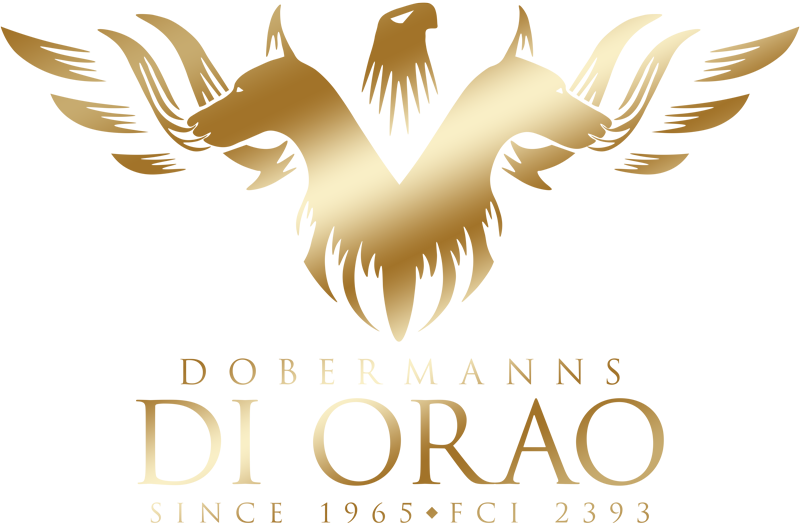Proper nutrition for a Doberman requires careful planning to ensure all necessary nutrients for this active and muscular breed. Dobermans are medium to large-sized dogs with pronounced muscle mass and fast metabolism, which means their diet must be rich in high-quality proteins and other essential nutrients.
Basic Principles of Doberman Nutrition
An adult Doberman weighing about 35-40 kg (77-88 lbs) typically requires between 1800-2200 calories daily, depending on activity level, metabolism, age, and health condition. This caloric need should be distributed to include:
- 25-30% high-quality proteins
- 15-20% healthy fats
- 45-50% complex carbohydrates
The most practical approach is to divide the daily food intake into two main meals – one in the morning and one in the evening, with at least 10-12 hours between them. This helps prevent bloating and potentially dangerous gastric torsion, which is particularly risky for deep-chested Dobermans.
Schedule and Composition of an Ideal Daily Feeding Plan
Morning Meal (7-8 AM)
- 200-250 grams of high-quality kibble with high protein content (minimum 26%)
- 100-150 grams of fresh cooked meat (chicken, beef, or lamb)
- 1 small cup of yogurt
- 5 grams of ground eggshells (as a calcium source, once every ten days)
- ½ tablespoon of salmon oil (2-3 times per week)
- 30-50 grams of cooked vegetables (carrots, pumpkin, zucchini)
Total weight of morning meal: about 350-450 grams.
Evening Meal (6-7 PM)
- 200-250 grams of high-quality kibble
- 100-150 grams of fresh cooked meat (different from the morning meal)
- Half a cup of yogurt
- A small amount of fresh vegetables or fruit as a treat (seedless apple, blueberries, cucumber)
Total weight of evening meal: about 300-400 grams.
Variations and Options for Diet Diversity
Fish Option (1-2 times per week)
Instead of meat, you can offer:
- 150-200 grams of cooked fish (salmon, sardines, cod, or trout)
- Reduce the amount of salmon oil that day or omit it completely
- The rest of the meal remains the same
Fish provides essential omega-3 fatty acids that are beneficial for skin health, coat shine, and reducing inflammation. However, it should not be given more than twice a week due to possible excessive intake of mercury and other heavy metals, especially if larger fish are used. Try to cook meat in one piece or, after boiling, blend it to a paste consistency, and then mix it with vegetables.
Pumpkin or Carrot Option (several times per week)
Pumpkin and carrots are excellent for digestion and can help regulate bowel function:
- 70-100 grams of cooked pumpkin or carrots
- Mix with the regular meal
- Especially useful if the dog has occasional digestive problems
Raw Egg (1-2 times per week)
Raw egg is rich in protein and healthy fats, but should be given in moderation:
- 1 whole raw egg (including yolk)
- Can be added to the morning meal
- Never give more than 2-3 eggs per week to avoid the risk of biotin deficiency, as a result of biotin binding by avidin proteins from the egg white.
Supplementation
- Multivitamin complex: Once daily, as recommended by your veterinarian and depending on the quality of the basic food (We use Anima Strath tablets, four daily)
- Salmon oil: 1/2-1 tablespoon 2-3 times per week (provides essential omega-3 fatty acids)
- Ground eggshells: 5-7 grams daily as a calcium source
- Probiotics: Through natural yogurt or as a supplement, especially after antibiotic therapy
Important Notes on Nutrition and Physical Activity
Critical Warning: Dobermans, as deep-chested dogs, have an increased risk of gastric dilatation-volvulus (GDV), also known as stomach torsion – a potentially fatal condition requiring immediate intervention, recognized as an emergency in veterinary medicine.
To reduce this risk:
- Do not feed your dog at least two hours before and two hours after intense physical activity
- Limit water intake 30 minutes before and 1 hour after intensive exercise
- Divide daily food intake into at least two meals
- Avoid raising the food bowl – research shows this may increase the risk of torsion
- Learn to recognize early signs of torsion: restlessness, unsuccessful attempts to vomit, abdominal bloating
Adjusting to Individual Needs
Each Doberman is unique, so the described plan should be adapted to your dog’s individual needs. Factors to consider include:
- Activity level: More active dogs require more calories
- Age: Older Dobermans usually need fewer calories, especially of protein origin due to additional strain on kidney and liver function
- Health condition: Special health needs may require an adapted diet
- Season: During colder months, dogs often need somewhat more calories
Regularly monitor your Doberman’s weight and physical condition, and adjust food amounts if you notice weight loss or gain. Optimally, you should be able to feel the ribs when lightly pressing your hand over the chest, but they should not be visible (slightly discernible).
Consultation with a veterinary nutritionist can help create a diet that is ideally suited to your Doberman, especially if it has specific health issues or nutritional needs. Quality, balanced nutrition is a key investment in the longevity and quality of life of your Doberman.
Thank you for your time
Orao Doberman
